A sampling of the latest Irish books on offer.
℘℘℘
RECOMMENDED
The scope of Tim Pat Coogan’s latest book Wherever Green Is Worn: The Story of the Irish Diaspora is like nothing he’s ever done before — and perhaps like nothing ever done in Irish history.
The esteemed journalist spent the last five years traveling the world, from Japan to Latin America, from Africa to the U.S. He was in search of Irish fingerprints — that is, the impact the Irish have had not just in one country, but around the world.
“Some 70 million people on the globe are entitled to call themselves Irish — a remarkable statistic when one considers that there are only five million people on the island of Ireland itself,” Coogan write in his introduction. Flashing his trademark wit, Coogan adds: “And of these (five million Irish) at least 800,000 living in North-Eastern Ireland say they are not Irish at all and describe themselves as British!”
As Coogan’s 700-plus page book makes clear, those Protestants in the North are quite the exception. Proudly citing Irish ancestry or influence is truly a global phenomenon.
Coogan (whose previous books The IRA, The Troubles, Michael Collins and De Valera were all critically acclaimed best-sellers) takes a decidedly broad view of Irish influence in this book. Nevertheless, he makes a convincing case that, as a result of immigration, imperialism and missionary activity, the Irish who scattered across the world have indeed left a distinctive mark, from Japan to South Africa to Latin America. ($35/746 pages/St. Martin’s Press)
_______________
NON-FICTION
Famed 1960s activist Tom Hayden — Mr. Jane Fonda for some time — has fashioned himself into quite the Irish-American author. A California state senator for nearly two decades, Hayden authored the legislation which required that the Irish Famine be taught in his state’s schools. He also visited Northern Ireland on a fact-finding mission in 1995, and has now written a personal/political memoir, Irish on the Inside: In Search of the Soul of Irish-America.
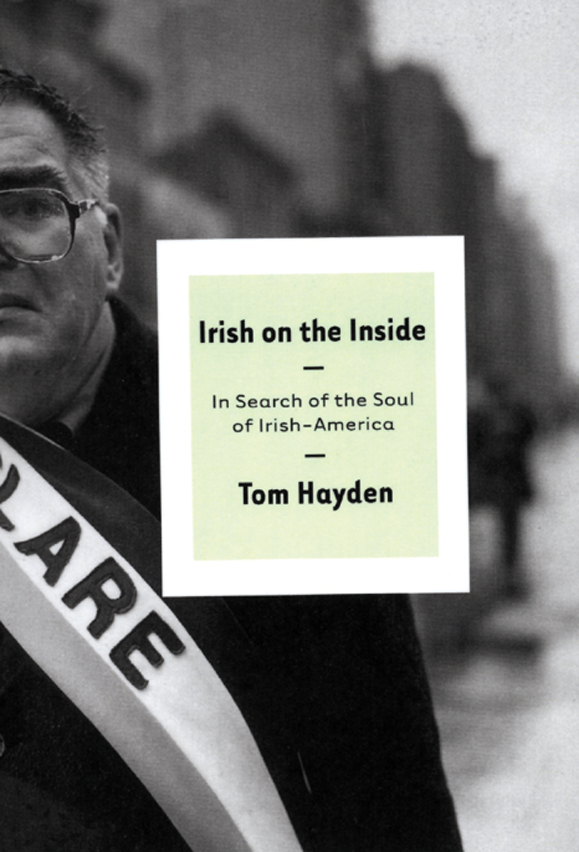
Suffice it to say, this is not exactly a conventional reflection. There’s a section entitled “Che Guevera, C. Wright Mills and the Lost Irish Soul.” Hayden’s liberal/radical credentials are still impeccable, which may turn some readers’ stomachs.
But Hayden’s passion for Irish and Irish American affairs cannot be denied. He bounces around from Boston gangs in the 1840s to Belfast today, and at times this seems disjointed. But in Hayden’s view, the past and present are intimately intertwined. Sections such as “The Sixties Made Me Irish” are sure to roll a few eyes, but overall Irish on the Inside has surprising insight, emotion and depth. ($23/308 pages/Verso)
_______________
University of Ulster lecturer Paul Dixon takes a textbook approach — literally — to the Troubles in Northern Ireland: The Politics of War and Peace. Though it is thorough and informative, Dixon’s book is quite dry, and reads like a history written almost entirely for Sociology students. This is unfortunate because Dixon’s approach to the Troubles is refreshing, balancing both the battle of bombs and bullets with the more subtle psychological aspects of war. (Dixon focuses mostly on events since the 1960s.) The brief sections on the main players and parties will also be useful to those whose interest in this centuries-old, complicated struggle is new.
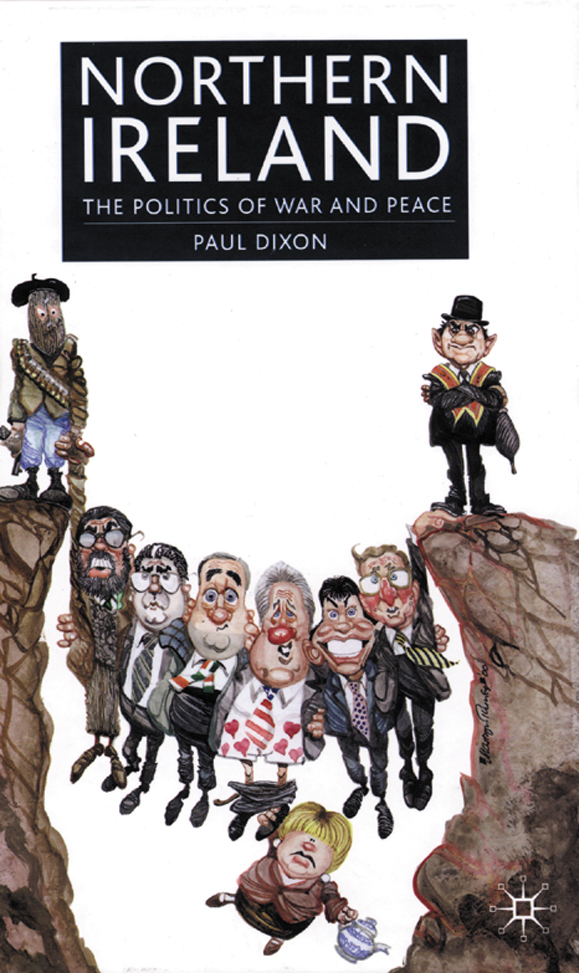
Where Dixon may lose general readers is in sections which break down the struggle into “Agency Oriented” and “Structural” explanations. Or perhaps you prefer the “Strategic-Rational Approach.” This doesn’t quite capture the passions of the North. ($65/334 pages/Palgrave)
________________
What does capture the difficulties of life in Northern Ireland is William J. Abraham’s essay “Terrorism and Forgiveness,” in the new collection Reflections on Forgiveness and Spiritual Growth. Edited by Andrew Weaver (who writes a short, powerful introduction) and Monica Furlong, the book probes a number of controversial topics from political, spiritual and even medical perspectives. Abraham’s essay deals with the November 1987 bombing in his home town of Enniskillen, Northern Ireland. Included is an interview with Gordon Wilson, whose 11-year-old daughter was killed in the tragedy. Abraham uses Wilson’s heartbreaking account to explore the effects of this unique kind of war not only on individuals but entire communities. The results rely a bit too heavily on spiritual jargon, but Abraham also makes an honest effort to both confront Irish tragedy and recover from it. There is also a useful “study guide” of tips, exercises and recommended readings. ($13/176 pages/Abingdon Press)
_______________
An Englishman of Irish descent, writer and performer Pete McCarthy brings readers on a hilarious tour of Ireland in McCarthy’s Bar: A Journey of Discovery in the West of Ireland.
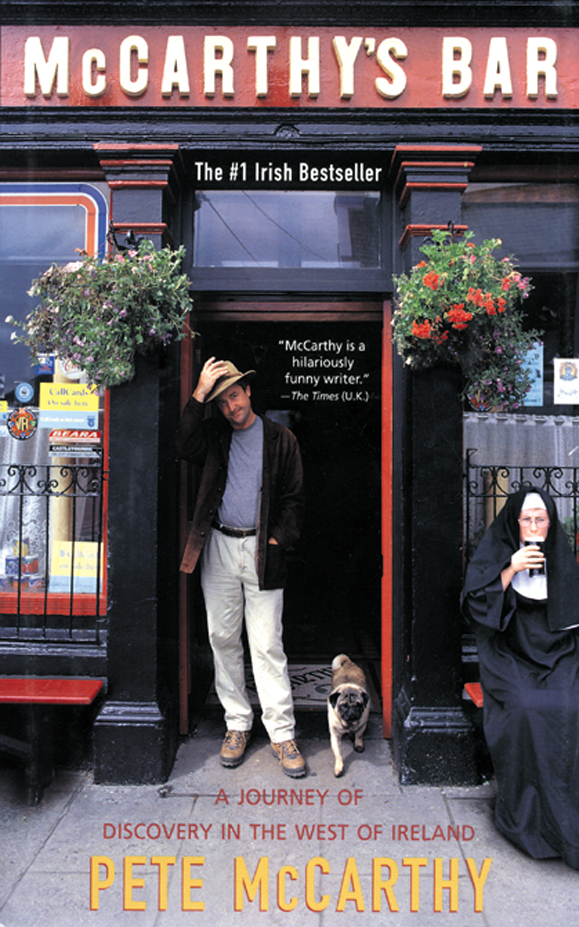
Along the way, McCarthy stops for a pint in every “McCarthy’s bar” he, uh, stumbles across. There’s no shortage of such pubs, particularly in Cork, which is where his mother was born.
A number one best-seller in Ireland and the U.K., McCarthy’s Bar explores the Irish (and their stereotypes) humorously, but affectionately. At the book’s center, meanwhile, is the very serious and resonant question of the impact our ethnic background has had on our lives and personalities. That McCarthy can take this well-worn topic and make it fresh is one of the many pleasures of this book. ($24.95/320 pages/Thomas Dunne Books)
_______________
FICTION
The son of Hollywood actors, author Darcy O’Brien knows a thing or two about the life he depicts in his forgotten classic A Way of Life, Like Any Other. O’Brien’s protagonist is himself a child of Hollywood, whose parents’ glory days have passed them by, leaving wreckage in the wake for all to bear.
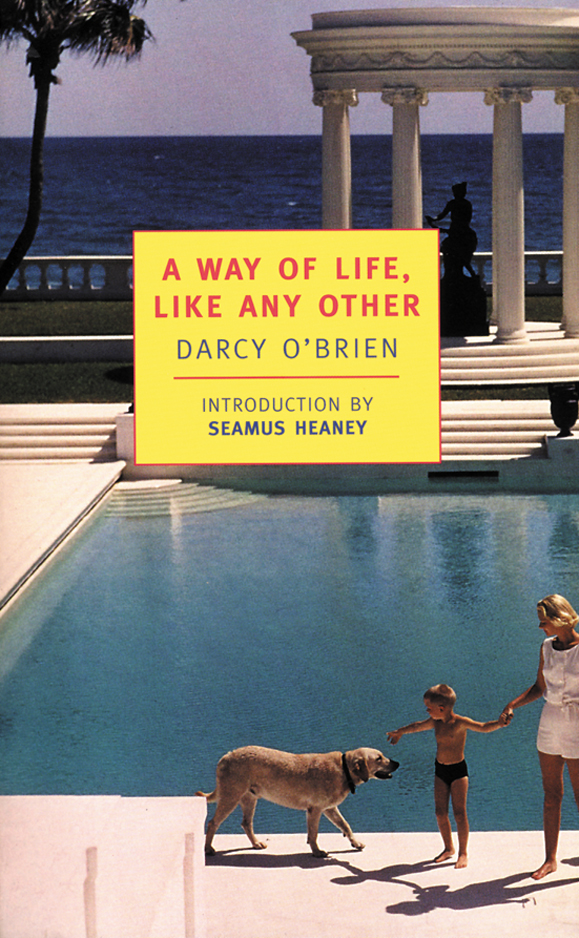
First published in 1977, this hidden gem has been reissued, with an insightful introduction by none other than Seamus Heaney. The Nobel Prize-winning poet writes, “[O’Brien’s] mother, the actress Margueritte Churchill, was a great anglophile and gave him his first name in order to link him to the character in Jane Austen’s Pride and Prejudice. If she was intent on countering the American Irishness of the O’Brien connection, she didn’t succeed, since at Berkley [author] Tom Flanagan would reveal the Irish dimension of the Darcy name (wasn’t there a Mr. Bartell D’Arcy in `The Dead,’ for a start).” Heaney goes on: “In doing so the teacher is bound to have brought the student of Joyce to an awareness that the English, Irish, and American traditions constituted a kind of literary trampoline where [O’Brien] could exercise and excel.”
Brooding and funny, as well as a fascinating portrait of a changing, mid-century Hollywood, A Way of Life, Like Any Other is yet another lost title laudably reclaimed by the New York Review of Books Classics imprint. ($12.95/155 pages/NYRB Classics.)
_______________
Beware: Here comes yet another writer from the U.K. whose publishers are offering up comparisons to Sex and the City and Bridget Jones’ Diary. Scottish-born to Irish parents, Morag Prunty has already made a name for herself as a young publishing whirlwind. At 21 she became the youngest editor ever of a national U.K. magazine, when she took over the helm at Looks. She later ran Irish Tatler Magazine and in 1993 wrote Boys! A Users Guide for Teenage Girls, which has been translated into 12 languages.
Now comes her novel, Wild Cats and Colleens, with its inevitably hardened, cynical women and reckless, feckless men. In this case we meet Laura, Gloria and Sandy, all thirtysomething or on the verge, and in search of men and laughs. Along the way, Prunty targets both the excesses of the Celtic Tiger and green-eyed Irish Americans on the lookout for authentic leprechauns.
This is familiar stuff. But Prunty’s prose packs a punch (“the vodka gremlins must have been at her in the night again”), and there are many laughs here, even if we’ve heard her dry, angry, understated voice before. (“At the top of her list of People Who Deserve to Lose an Earlobe was Francesca Duffée (christened Fionnuala Duffy…”) ($25/297 pages/HarperCollins)
_______________
KIDS
If you’re planning a trip to Ireland with the kids, an invaluable resource is the newly revised and updated Ireland for Kids by Derek Mackenzie-Hook. The book is a true travel guide even for adults, but is one of the few such books to offer a special focus on activities, restaurants, sites and tours which will especially please the little ones, whatever their ages.
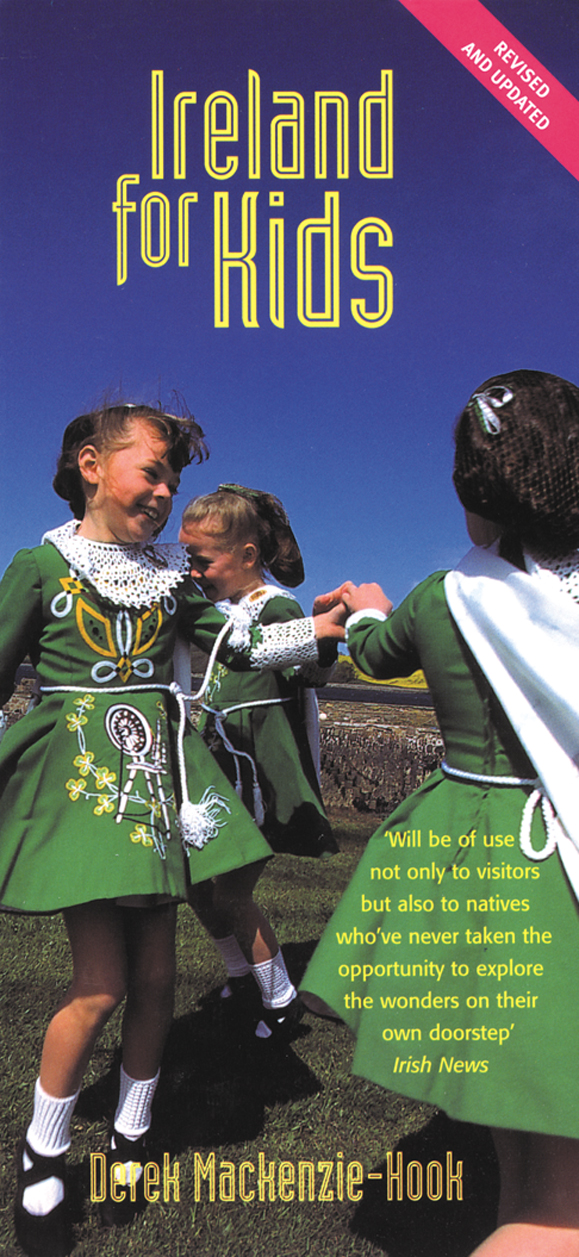
Well organized and accessible, the book is broken down by county, and offers phone numbers for, and directions to, places to visit, eat and stay. There are also brief but informative introductions on each county, which provide a snapshot not only of tourist information, but history, geography and more.
“Westmeath nestles in the heart of Ireland and offers a wide range of rural pursuits for the outdoor enthusiast,” we are told, and later learn, “Every Westmeath lake has a myth or legend associated with it, guaranteed to capture children’s imagination.”
Maybe it would be nice if the author actually could back up that guarantee, since adults who have traveled with kids know that difficulties will arise. Still, having this book in the backpack before you head off to Ireland is a good way to ensure that the Rocky Road to Dublin — or Tyrone, or Donegal — is as smooth as possible. ($16.95/372 pages/Mainstream Publishing)
_______________
POETRY
Eavan Boland’s new poetry collection is sure to whet the appetites of her many fans on this side of the Atlantic. In “Marriage,” the first section of Against Love Poetry, the Dublin native explores the passion, memory and heartbreak of men and women who’ve spent lives together.
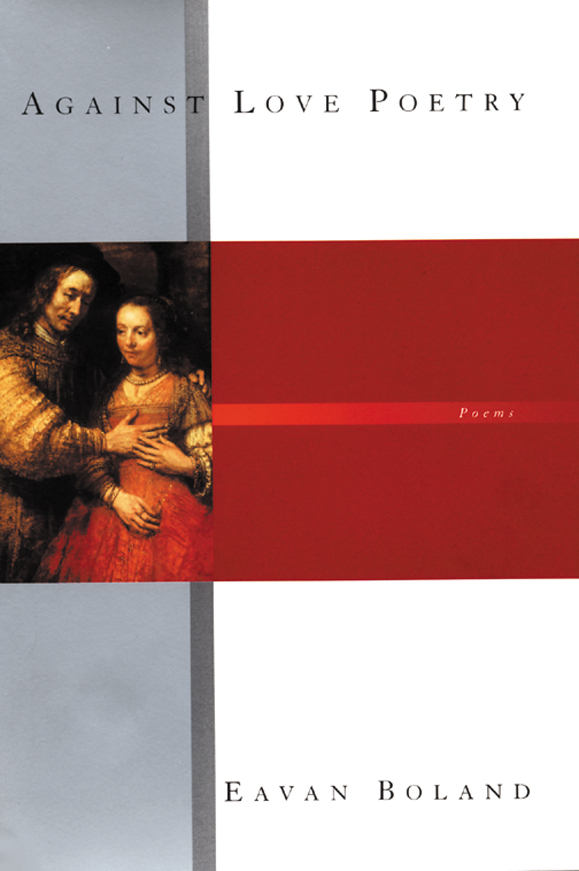
“Where are the lives we lived / when we were young? / Our kisses, the heat of our skin, our bitter words? / The first waking to the first child’s cry?” Boland writes in the typically wistful, longing “Then.” Diverse pleasures abound in other poems about immigration, nature or even the life of “Hester Bateman, 18th Century English Silversmith (Who) Takes an Irish Commission,” to use the title of Boland’s first poem. ($21/53 pages/Norton) ♦

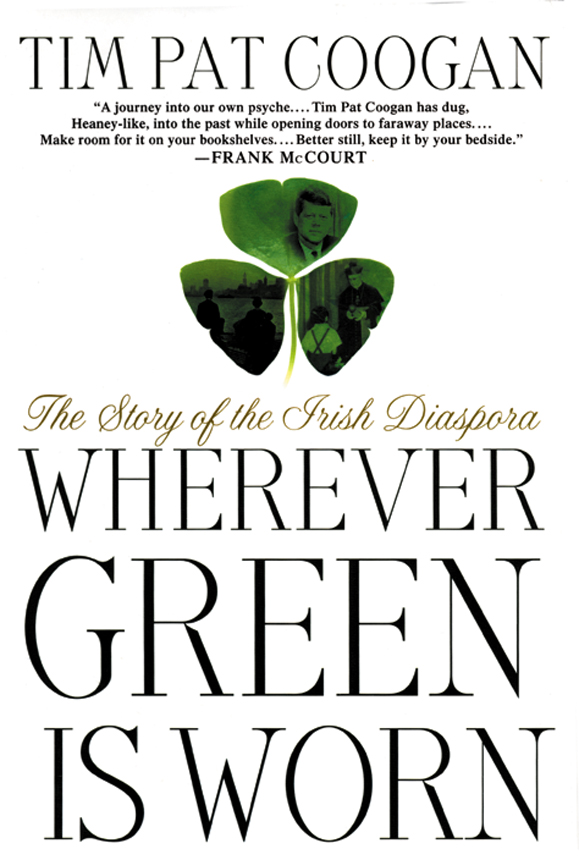
Leave a Reply